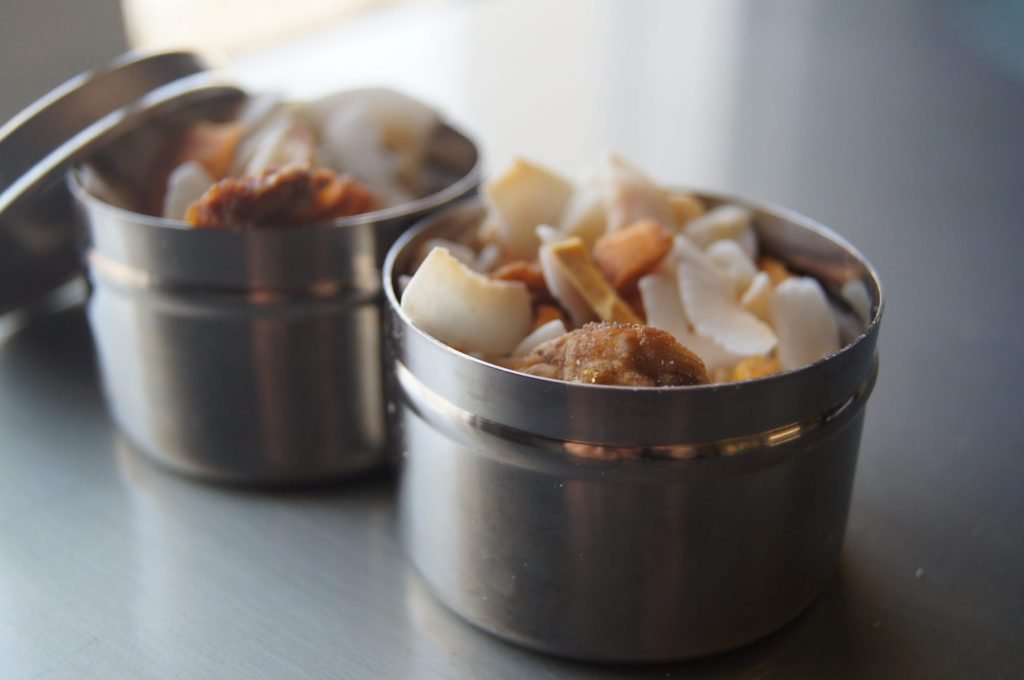
What’s the Low Down On Dried Fruit?
Dried fruit has waxed and waned in terms of its popularity over the years. Once upon a time it seemed perfectly acceptable to give a hungry toddler a small cardboard packet of raisins to keep them going between meals. Since then though it seems that parents who do this are frowned upon for providing something so high in sugar between meals. There’s also the issue of preservatives. Are they useful? Are they healthy? And is there anything actually healthy about dried fruit? It’s seems to suggest ‘health’ from the labels on muesli’s and yogurts containing dried fruit for example. They scream “eat me because I am the elixir of health”. So what is the low down on dried fruit?
Sugar and Dried Fruit
Think of a ripe, crisp and sweet grape. Imagine the taste as you bite into that juicy morsel. Now imagine eating 90 grapes one after the other after the other. How would you feel? You might not feel so great. Well, in a box of raisins (42.5g) there are approximately 90 raisins. Raisins are, after all, dried grapes. This is a discussion or even an experiment you could carry out with your children to bring home the point that dried fruit is a much more concentrated way of eating sugar and a much easier way to consume a lot of sugar.
When you dry fresh fruit out you take out the water, which concentrates the sugar into a smaller amount of food. This makes it much easier to eat a lot more of it. If your children are not convinced by the grape argument there are many more examples:
| Dried fruit | Whole Fruit Equivalent |
| 1 cup dried apples | 2 apples |
| 1 cup dried apricots | 23 apricots |
| 1 cup dried blueberries | 4.5 cups of blueberries |
| 1 cup prunes | 4 Cups of Plums |
Ref: Paleo Leap
So we know that dried fruit is a quick way of consuming sugar but is there anything in dried fruit that provides health benefits unavailable or less available in fresh fruit?
Health Benefits of Dried Fruit
The dehydration process used in creating dried fruit can diminish the nutrients available slightly. However, the nutrients left are more concentrated but then so are the sugars. What this means is that dried fruit can be useful to some people or at certain times. The high sugar content and nutrient density lends dried fruit to being consumed after sport or during endurance events. This is when your body is receptive to the insulin-boosting effects of higher sugars. The only slight issue with this is if they cause digestive disturbances. Dried fruit is high in sugars on the FODMAP scale and so some people may find it more difficult to digest.
What About the Preservatives Used in Dried Fruit?
Dried fruits are among the foods highest in sulphites. According to the Food Intolerance Network website “Analyses by a year 12 chemistry student at a Brisbane High School of dried apricots, peaches and pears found an average sulphite level of 2885 mg/kg.” That means a packet of preserved dried fruit contains 144 mg per 50g serving. “To put that into perspective, the Acceptable Daily Intake for a 10-year-old weighing 21kg is just 15mg of sulphite per day. That is ONE dried apricot.”
If you have asthma, you have a much higher risk of developing a reaction to sulphur dioxide than a person without asthma. So if you have an asthmatic in your family I would advise reducing the quantity of dried fruit consumed or finding dried fruit without sulphur dioxide used as a preservative. It is sometimes called E220 on food labels. More often than not organic dried fruit is preservative free.
How to eat dried fruits as part of a balanced diet?
So, we have discovered that dried fruits provide a concentrated form of sugar but also nutrients. A small amount can be part of a balanced diet. It is best to enjoy dried fruit after exercise or alongside protein and/or fat to reduce your body’s reaction to the sugars. If you have concerns about asthma and sulphur dioxide, the preservative used in dried fruit, then buy organic dried fruit which is largely not preserved with sulphur dioxide.
Some suggestions for including dried fruit in a balanced diet:
- Adding a ‘topper’ of dried fruit and nuts to natural yogurt
- Making a trail mix with a small amount of dried fruit but a reasonable amount of unsweetened coconut flakes, seeds or nuts.
- As part of a salad within in the salad itself or as a salad topper.
- Or to help sweeten sauces and cakes.
